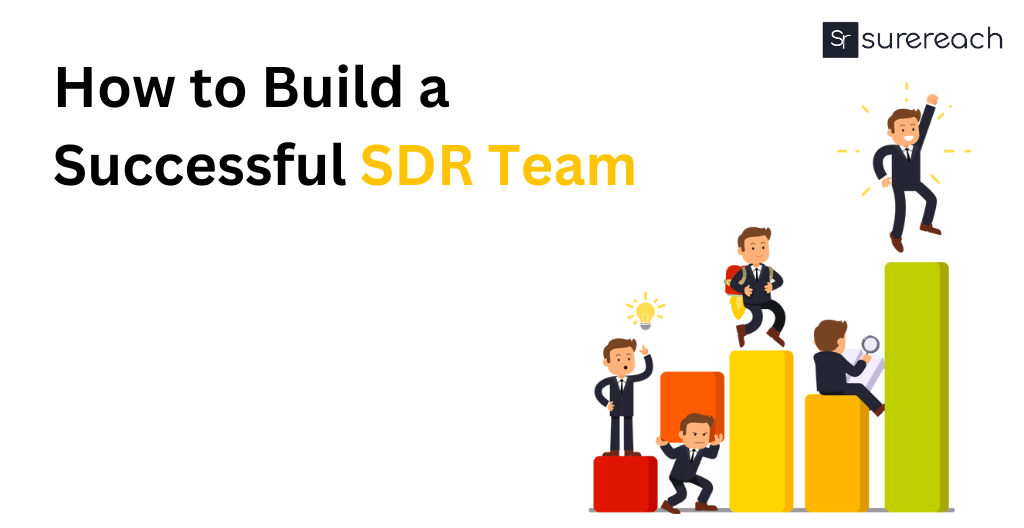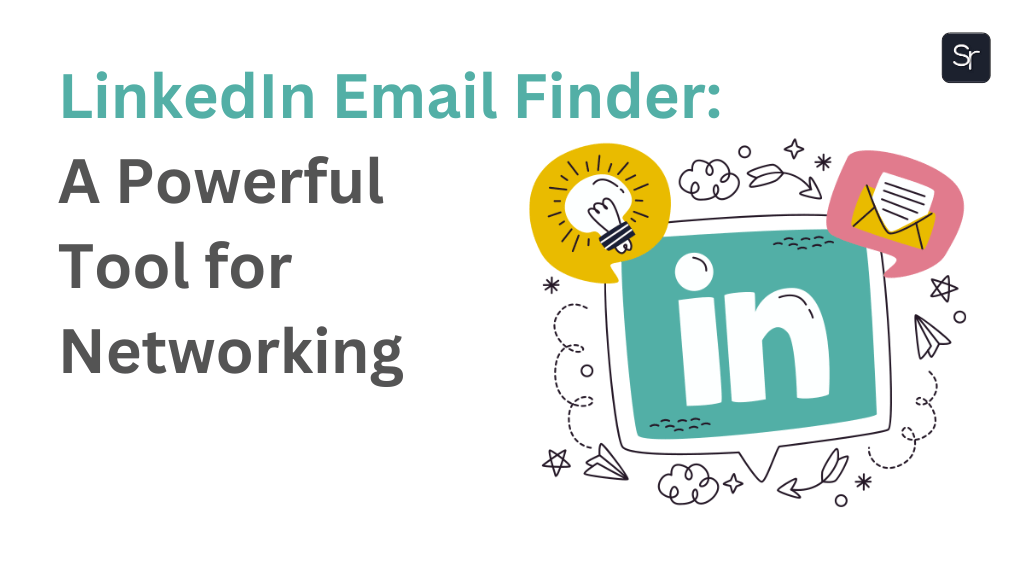What is SDR?
To speed the sales funnel, sales development representative (SDR) teams create, qualify, and nurture marketing-sourced prospects. This article delves into the main components and methods required to establish and lead a successful SDR team, laying the groundwork for long-term sales success.
SDR Meaning
Sales development teams play a crucial role in bringing sales and marketing together to build a streamlined lead-generation process. SDR squads are responsible for identifying and engaging prospects from targeted outreach campaigns, qualifying inbound leads, conducting discovery calls to identify needs and pain points, pursuing hot leads while nurturing colder leads, and efficiently handing off qualified opportunities to account executives. A specialized sales development team allows salespeople to focus on closing while guaranteeing lead follow-up.
Usually, sales development teams report to sales organizations but collaborate closely with marketing. According to research, embedding SDRs within the sales department results in more quality opportunities being sent to account executives. SDRs in sales employ the department’s procedures, training, and leadership to ensure that sales-ready leads are properly qualified and transitioned. Sixty-four percent of sales development teams report to Sales. However, marketing alignment is still essential so that outbound initiatives target ideal prospects who become pipelines rather than wasting time.
SDR Sales Team
A Sales Development Representative (SDR) team is critical in bridging the marketing and sales divide and converting quality leads into profitable engagements. Building an effective, high-performing SDR team necessitates a methodical strategy. The key elements for creating a successful SDR team are listed below.
-
Recruitment of Sales Development Representatives
Focus on employing individuals that are not only talented but also connect with your company’s values and objectives to establish a solid foundation for your SDR team. Investigate several employment channels, including as job boards, social media, and industry-specific events, to access a large pool of possible applicants.
SDRs should be recruited from inbound lead generation professions such as business development representatives (BDRs), as they have critical cold outreach abilities. These personnel are already aware of the intricacies of lead generation and are ready to go. Utilize the networks and internal recommendations of your current sales staff to identify people who are familiar with your goods, customers, and work environment. Candidates with technical competence and critical soft skills such as tenacity, work ethic, and enthusiasm to learn should be prioritized.
SDRs should be recruited from inbound lead generation professions such as business development representatives (BDRs), as they have critical cold outreach abilities. These personnel are already aware of the intricacies of lead generation and are ready to go. Utilize the networks and internal recommendations of your current sales staff to identify people who are familiar with your goods, customers, and work environment. Candidates with technical competence and critical soft skills such as tenacity, work ethic, and enthusiasm to learn should be prioritized.
When assessing potential SDR personnel, consider their ability to convey value propositions, identify pain areas, and advance possibilities via the sales funnel. Look for team members that are data-driven and process-oriented, and who can cooperate cross-functionally and adapt to the dynamic nature of sales.
-
Qualities to look in SDR
- Strong communication and active listening skills are required for effectively communicating the value of your product to customers.
- Resilience in the face of rejection: Sales is a career fraught with rejection; resilience is essential.
- Personalisation may greatly enhance engagement rates in sales and marketing activities if it is done creatively.
- Passion for sales and competitiveness: A desire to succeed guarantees that they remain motivated and work well, whether through inside or outside sales tactics.
- Keeping detailed processes organized: It is critical to keep track of leads and conversations in order to conduct efficient follow-ups.
- Patience in adequately qualifying each lead: Not every lead will convert; patience is required to focus efforts on the most promising possibilities.
-
Training & Onboarding
Comprehensive onboarding and training are critical for the success of an SDR staff. Provide your new employees with in-depth product knowledge, practical communication skills, and a thorough comprehension of your B2B sales cycle. The following topics should be covered in training:
- Your sales funnel, procedure, and terminology: Clarifying the process of generating, nurturing, and converting leads.
- Messaging and value propositions: Ensure communication consistency and effectiveness.
- Qualification of leads and opportunities: Teaching them to identify and prioritize possible leads.
- CRM, email tracking, and dialers are examples of tools to improve their efficiency, familiarize them with the SDR tools.
- Best practices for phone calls and emails: Sharing techniques that have proven to be successful.
- Product knowledge entails ensuring that they thoroughly comprehend what they are selling.
-
Compensation
SDR remuneration typically ranges from $45-55k basic income + commission for meetings booked. Many firms provide accelerators in exchange for meeting activity requirements. Money motivates; hence, optimize remuneration to encourage SDR activity. Furthermore, a well-thought-out pay strategy attracts and motivates outstanding people.
Furthermore, the typical salary-to-commission ratio is around 70:30. While SDRs enjoy a secure income, a large percentage of their salary is related to their performance, pushing them to continually offer their best.
SDR -Additional Role in Sales
SDR positions are often entry-level, but with the correct training and performance, there is plenty of possibility for advancement. Outline a clear route for advancement from SDR to account executive or other senior jobs in the sales department. This route encourages SDRs to flourish while also ensuring that you have a pipeline of trained and experienced professionals ready to take on more senior jobs.
Top SDRs become your next AE stars, greatly contributing to the success of your sales department. Investing in your SDRs’ careers guarantees that you keep top talent, lowering turnover and the related expenses of acquiring and training new employees.
Building a successful SDR Team
Building a superb SDR team necessitates selecting people who are willing to learn and improve, giving rigorous training and the necessary tools, delivering competitive remuneration, and providing possibilities for career growth. As a consequence, you’ll have a well-oiled sales engine powering your pipeline and significantly contributing to your organization’s overall success.
- Meetings scheduled: This is the major objective of SDRs and SDR Managers. To assess individual performance and discover coaching opportunities, track the overall number of appointments established and the meetings booked by each representative.
- Contact rate: The percentage of prospects that were successfully reached. This measure is critical for determining the efficacy of outreach initiatives and ensuring that the team engages enough leads.
- Response rate: The proportion of contacts who react. This number must be compared to industry averages in order to determine how effectively your messaging connects with the target demographic.
- Lead to opportunity conversion rate: The proportion of leads that progress to become sales-qualified opportunities. Strive for ongoing progress in this area to create a strong sales development pipeline.
- SDRs produce the following revenue: The overall sales revenue attributable to effective sales development activities by SDRs. This statistic is critical for demonstrating the SDR team’s ROI and justifying additional resource allocation.
Sales Development with Surereach
To successfully monitor the effectiveness of an SDR team, it is critical to analyze trends in these metrics in respect to stated targets on a regular basis. Furthermore, segmenting the data by campaign type, communication channel, geographic region, and industry can reveal more specific insights, allowing for more strategic decision-making. Prospect engagement is ensured by tracking activity data such as the number of calls and emails made.
Simultaneously, polling sales teams on the quality of offers acquired by SDRs can give useful input for continuing improvement. Organizations may enhance the top of the B2B sales funnel by exploiting these insights, guaranteeing a consistent supply of qualified leads and contributing to overall business success.
Surereach, the top solution for precision in B2B lead generation, will improve the performance and efficiency of your SDR team. Surereach guarantees that your team gets access to dependable and up-to-date contact information by boasting an outstanding 95% data accuracy.
Select Surereach to enable your SDR team to achieve unprecedented success in their outreach initiatives. Begin your journey with Surereach today to take the next step in optimizing your sales process.








Sachin Bhola
More posts by Sachin Bhola